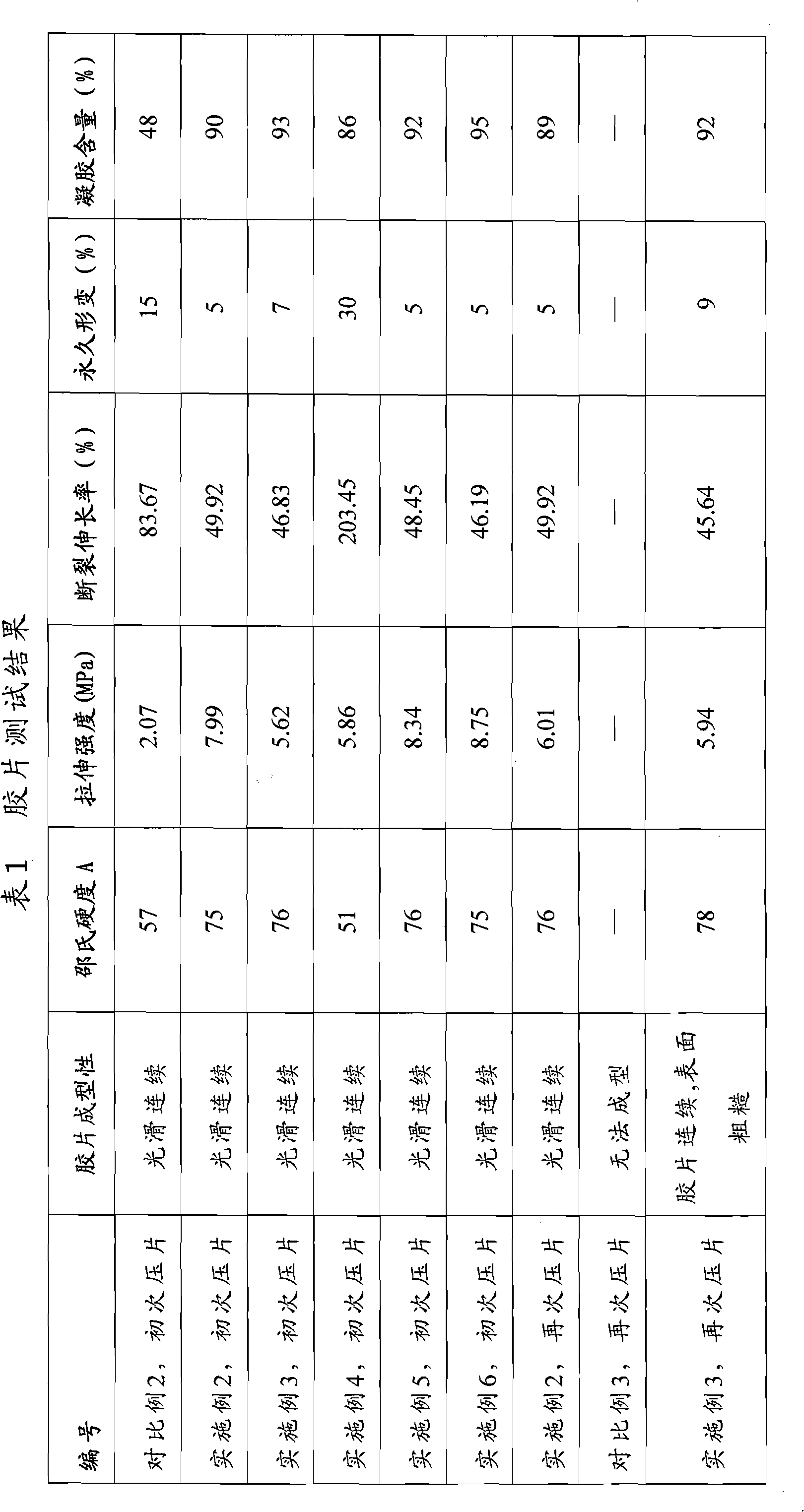Application of polymer particle with chlorine on the surface as thermal reversible reactive filler and composition of polymer particle with chlorine on the surface
A technology of polymer particles and polymer materials, which is applied in the field of polymer fillers, can solve problems such as environmental pollution and waste of resources, and achieve excellent reinforcement performance
- Summary
- Abstract
- Description
- Claims
- Application Information
AI Technical Summary
Problems solved by technology
Method used
Image
Examples
preparation example Construction
[0023] In the present invention, the emulsion polymerization preparation method of surface chlorine-containing polymer particles comprises the following steps:
[0024] (1) Pre-emulsification: Pre-emulsify the vinyl monomers used to form polymer particles under suitable conditions;
[0025] (2) The monomer is polymerized to form particles: add an initiator to the pre-emulsified material to carry out a polymerization reaction, and keep it warm for a period of time;
[0026] (3) Particle surface functionalization: In the system obtained in step (2), chlorine-containing monomers are added dropwise under the condition of stirring and nitrogen flow, and the polymerization is continued to obtain surface chlorine-containing polymer particles.
[0027] Wherein, the initiator can use oxidation-reduction initiator systems such as potassium persulfate-sodium bicarbonate, hydrogen peroxide-ferrous sulfate, hydroperoxide-ferrous salt, and water-soluble azo initiators.
[0028] Preferably,...
Embodiment 1
[0051] The preparation of the polymer particle filler that the surface of embodiment 1 contains chlorine
[0052] Add 65g of styrene monomer into a 1000ml four-neck flask filled with 480g of deionized water, pass nitrogen gas to deoxygenate for 10 minutes, set the mechanical stirring speed to 300 rpm, heat up to 40°C, and add 1.00g to the system Sodium dodecylsulfonate, 3.20g of divinylbenzene and 1.20g of sodium bicarbonate were stirred and pre-emulsified for 30 minutes. Then the temperature was raised to 89°C, and 2.50g of potassium persulfate initiator dissolved in 40ml of deionized water was added, and the temperature was lowered to 60°C after polymerization for 6 hours, and 3.25g of chloromethylated styrene was slowly added dropwise, and the reaction was continued at 60°C for 18 Hour. After the reaction, the obtained particle emulsion is centrifuged and dehydrated, and dried under reduced pressure at 60° C. to obtain a dry powder, which is a reactive polymer particle fil...
Embodiment 2
[0055] Example 2 Thermoplastically Processable Composition Using Polymerization Inhibitor (Filling and Reinforcement of Polymer Material by Reactive Filler)
[0056] Add 100 g of pyridine-butadiene rubber on the two-roller mill, adjust the roll distance to be 0.5 millimeters, mix the rubber sample for 10 minutes, then add 25 g of the polymer reactive filler containing chlorine on the surface of Example 1, 2 g of stearic acid, 3g of zinc oxide, 10g of paraffin oil, and 2g of anti-aging agent 2246 were kneaded for another 15 minutes. After the kneading was completed, the rubber material was stretched on a roller to form a sheet with uniform thickness. The obtained film was placed in a mold with a length of 135 mm, a width of 115 mm, and a thickness of 2 mm, and was thermocompressed at 160° C. for 30 minutes to obtain a filled and cross-linked film.
[0057] Re-thermoplastic processing: cut the hot-pressed film into small pieces with a length and width of 65 mm, laminate the four...
PUM
 Login to View More
Login to View More Abstract
Description
Claims
Application Information
 Login to View More
Login to View More - R&D
- Intellectual Property
- Life Sciences
- Materials
- Tech Scout
- Unparalleled Data Quality
- Higher Quality Content
- 60% Fewer Hallucinations
Browse by: Latest US Patents, China's latest patents, Technical Efficacy Thesaurus, Application Domain, Technology Topic, Popular Technical Reports.
© 2025 PatSnap. All rights reserved.Legal|Privacy policy|Modern Slavery Act Transparency Statement|Sitemap|About US| Contact US: help@patsnap.com


